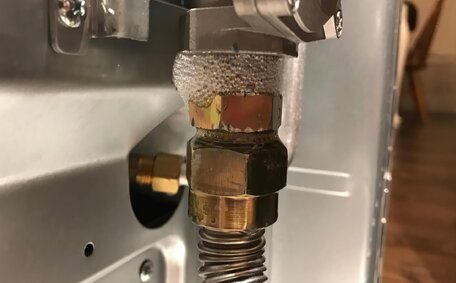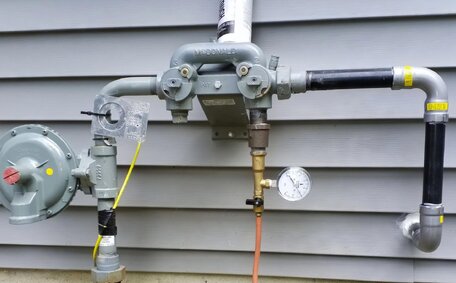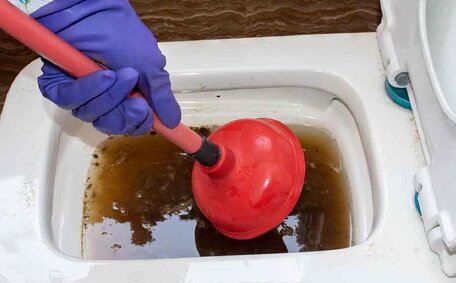Introduction to modern gas appliance technologies
Innovative, energy-saving gas appliance technologies are revolutionising the plumbing industry. Kenthurst Plumbing, servicing the Sydney region, leads in integrating these advancements into heating and cooling systems.
Modern gas cooking appliances outshine older models with their superior energy efficiency, lower operational costs, and diminished environmental impacts. Key technologies aligned with the gas substitution roadmap driving this change include:
- Condensing systems - Capture waste heat, increasing efficiency up to 25% compared to non-condensing models.
- Electronic ignition - Replaces pilot lights, improving safety and efficiency.
- Modulating burners - Automatically adjust flame height based on demand, optimising gas usage.
- Heat pumps - Extract outside air as a renewable energy source for water and space heating.
Kenthurst households can benefit from substantial energy bill savings by connecting modern gas appliances to Energy Networks Australia’s advanced systems. These appliances are instrumental in reducing emissions, aligning with Australia’s climate goals by curbing fossil fuel use and domestic greenhouse gas output.
This article elucidates the technologies and benefits underpinning the evolution of modern gas appliances. The article outlines cost savings, environmental impacts, safety considerations, and future trends, providing readers with information to make environmentally conscious decisions.
Key components in contemporary gas appliances
Contemporary gas appliances comprise advanced components that enhance safety and efficiency. Key components found in contemporary gas appliances include:
Electronic Ignitions
In water heating technologies, electronic ignition systems have superseded traditional pilot lights. An electric spark ignites the gas burner efficiently upon demand. This eliminates the need for a small constantly-burning flame, moving your home off the wasteful use of gas, improving safety and reducing gas usage.
Modulating Burners
Moderating burners can automatically adjust the height and intensity of the burner flame based on the heat demand. This optimises gas combustion efficiency as heat output is precisely matched to the load at any given moment.
Heat Exchangers
Heat exchangers transfer heat from the gas while maintaining consumption efficiency into water or air while keeping the products isolated. Condensing heat exchangers maximise efficiency by harvesting waste heat from water vapour in the exhaust. This can also boost efficiency by up to 25 per cent, which can significantly exceed the performance of non-condensing models.
Sealed Combustion
Sealed combustion systems separate the burner from indoor air. This improves safety and indoor air quality while also allowing recovery of much more heat from the flue gases.
Flue Systems
Modern power-vented flue systems with efficient electrical fans that reliably exhaust combustion gases and optimise the use of gas, also diminishing environmental impact. The flues contain several safety switches to shut off gas heating flow in case of blockage or backdrafting.
Electronic ignitions
Electronic ignition systems are a crucial upgrade in modern gas appliances. They work by using an electric spark to reliably ignite the gas burner, instead of relying on a pilot light.
Unlike pilot lights, electronic ignitions do not require continuous gas flow, reducing consumption when the appliance is inactive.
The key benefits of electronic ignitions include:
- Enhanced energy efficiency by eliminating the continuous gas consumption of pilot lights.
- Improved safety - Removes the open flame hazard and mitigates risks of gas leaks
- Reliable operation with quick restart capabilities when heat is needed.
Heat pump systems exemplify modern gas appliance capabilities that efficiently and safely warm your home. Upgrading from older pilot light models is a relatively easy way for Kenthurst homeowners to save on energy costs and reduce emissions from their household gas use in residential subdivisions.
Sealed combustion and venting systems
Sealed combustion systems are an important safety feature in modern gas appliances. They completely isolate the combustion chamber from indoor air.
In traditional gas appliances, room air is used to provide oxygen for combustion. This air becomes contaminated with combustion byproducts before exiting via the flue. Sealed systems instead draw combustion air directly from outdoors through a dedicated pipe.
Sealed combustion provides several key benefits:
- Improved safety - No interaction between combustion gases and indoor air quality
- Higher efficiency - Allows heat recovery from exhaust gases
- Flexible venting - Can accommodate more complex or longer flue pipe runs
Proper installation of sealed combustion units is essential, potentially necessitating compliance with planning permits and manufacturer guidelines. Robust fan-assisted gas systems guarantee thorough evacuation of exhaust gases.
By isolating combustion processes, sealed systems exemplify how modern gas appliances can provide efficient, safe and environmentally-responsible home heating to residents across Kenthurst and the Sydney region.
Benefits of upgraded gas appliances
transitioning from less efficient traditional appliances to modern, more efficient gas technologies can endow new homes with an extensive range of benefits, including:
Enhanced Energy Efficiency
Contemporary gas appliances employ advanced components such as modulating burners, heat exchangers, and electronic ignition to outperform traditional models in efficiency, similar to electric ovens and other modern appliances. This can reduce annual energy bills by more than $250.
Improved Safety
Sealed combustion, integrated control systems and the elimination of pilot lights significantly improve safety compared to older appliances. Electronic gas leak detectors provide additional protection.
Lower Environmental Impact
High-efficiency models enhance cooking performance while significantly cutting fossil gas emissions. Transitioning gas network supplies to renewable hydrogen and biogas will enable modern appliances to provide carbon neutral heating in the future.
Long-Term Cost Savings
Despite higher initial costs, the investment in new gas appliances can cost less in the long term due to significant energy savings, enough to be recouped in as little as 2-3 years. They also add value to a new home for resale while supporting personal and national emissions reduction targets.
Embracing modern gas appliances over traditional ones is precisely what we need, echoing Kenthurst Plumbing’s commitment to offering customers energy efficient, safe, environmentally sustainable and cost effective solutions over the long term.
Improved energy efficiency
Gas stove designs today boast significantly improved energy efficiency, especially when compared to their traditional counterparts. High-efficiency gas stoves and boilers, as well as bottled gas outdoor heaters, can operate at 95% AFUE (Annual Fuel Utilisation Efficiency) compared to 60-80% in older non-condensing units. This means that gas also becomes a more valuable energy source, with more of it being converted into usable heat rather than being wasted.
Tankless or instantaneous gas hot water heaters also provide enhanced efficiency. Tankless water heaters can lower gas usage by up to 30%.
High-efficiency gas appliances incorporate advanced combustion systems, modulating burners, and heat exchanger technologies to optimise energy utilisation. Improved insulation further reduces standby heat losses. Electronic ignition eliminates the need for wasteful constantly-burning pilot lights.
Even with higher initial costs, Australian households can offset the investment with annual energy savings of over $250 from upgraded gas appliances. This supports national emissions reductions efforts while cutting energy bills.
Enhanced safety features
Modern electrical appliances incorporate an array of enhanced safety features compared to traditional models. These improvements safeguard households while supporting reliable, efficient water cooking processes.
A key upgrade is the transition from open flame pilot lights to electronic ignitions using an electric spark. This removes a constant ignition source and limits gas flow to when heating is actively required. Flame sensors will automatically shut off gas if the burner is unexpectedly extinguished.
Sealed combustion separates the combustion chamber from indoor air for safety. This prevents leakage of harmful combustion byproducts such as carbon monoxide indoors while still allowing heat recovery from exhaust gases. Powerful flues safely vent waste gases outside.
Gas leak detectors provide another line of defence. These sensors can automatically cut off flow if they detect leakage, much like reverse cycle heating systems manage temperature control. Contemporary appliances also integrate control systems to regulate combustion parameters within safe limits.
Enhanced safety features of modern gas appliances assure Kenthurst homeowners peace of mind and the benefits of gas use in their homes.
Lower emissions and environmental impact
Modern gas appliances offer tangible reductions in emissions and environmental impact compared to traditional models. High-efficiency designs optimise combustion while capturing waste heat, enabling the same services with drastically lower greenhouse gas output.
Condensing gas furnaces emit up to 25% less carbon dioxide than non-condensing alternatives. And pump hot water systems, like tankless heaters rolling out new ways to reduce emissions, can lower them by over half a tonne per year by negating standby losses. Across Australia’s 10+ million households, these technologies collectively avoid millions of tonnes of carbon emissions annually.
As renewable gases like green hydrogen and hydrogen natural gas blends replace natural gas supplies, the environment benefits your home and community further still. Modern appliances are integral to this transition, particularly in the context of Victorian homes, providing the platform for zero-emission renewable gas utilisation in Australian homes and businesses.
So while upfront costs are higher, modern gas appliances pay back through energy savings while aligning with emissions reductions goals.
Cost savings for households
Upgrading to modern, energy efficient gas appliances can lead to significant cost savings for Australian households. High-efficiency gas furnaces and boilers can reduce year energy bills by over $250 through enhanced fuel utilisation and reduced standby losses.
adopting solar panels and photovoltaic systems alongside tankless gas water heaters provides additional savings by negating the need to continuously heat a reservoir, thereby reducing gas usage for water heating by up to 30%. With average energy bills in NSW around $1,250 per year, upgrading appliances could cut expenses by 20% or more.
The higher initial investment in all new contemporary gas appliances can be offset within 2-3 years solely from energy savings. Added resale value, multi-year warranties, and enhanced safety provide additional incentives for households to upgrade.
As the convergence of gas utilities and electrical services transitions their supplies, allowing you to connect gas with greener alternatives like renewable hydrogen and biogas, modern gas appliances will enable Kenthurst residents to achieve emissions reductions without compromising on performance or energy affordability. Contact Kenthurst Plumbing to learn more about maximising savings through high-efficiency gas technologies.
Future innovations and sustainable gas alternatives
The future of gas appliances is bright, coloured with new technology focusing on sustainability through emerging innovations and renewable gas alternatives. Exciting developments on the horizon include:
Hybrid gas-electric systems
Hybrid heat pump hot water systems, merging gas and electric technologies with the flexibility of dual fuel arrangements, significantly enhance efficiency under variant operating conditions. In efficient water heating systems, the pump manages routine loads, while the gas burner activates during peak demand. This optimises efficiency across operating conditions.
Hydrogen and biogas
Emerging government initiatives are dedicated to integrating hydrogen blends with renewable biogas into existing gas networks will endow modern gas appliances with carbon neutral capability. Trials, driven by new policy frameworks encompassed in the substitution roadmap, are underway across Australia to test hydrogen compatibility at higher blend ratios, paving the path towards 100% renewable gas supplies.
Smart controls
Smart control systems in gas appliances will automate efficiency and adjust to user patterns and grid demands, enhancing flexibility. This facilitates integration with renewable energy and supports emerging microgrid applications.
Integrating new and existing home technologies with gas infrastructure presents an excellent chance to implement renewable-ready solutions now, aiming for net-zero emissions. Continued innovation in the gas sector will empower gas appliances to deliver carbon neutral services safely, affordably and sustainably - aligning with Australia’s climate goals while maintaining quality of life for households.
Conclusion
Modern gas appliance technologies provide an array of benefits for Kenthurst households seeking enhanced efficiency, safety, sustainability, and cost savings.
Key innovations like electronic ignitions, modulating burners, heat exchangers and sealed combustion allow contemporary gas appliances to operate with drastically improved energy utilisation, akin to electric stoves, compared to traditional models. Integrated control systems and advanced flue designs also dramatically improve safety for homes.
And as existing homes increasingly use gas from renewable sources like hydrogen and biogas, replacing traditional natural gas supplies, modern appliances will enable more effective emissions reductions without compromising on performance or reliability.
While upfront costs are higher, homeowners can recoup expenses for upgraded gas appliances in as little as 2-3 years through energy savings. Added resale value, multi-year warranties and reduced environmental impact provide additional incentives to transition to modern alternatives.
As your local plumbing authority providing residential gas services in Kenthurst and neighbouring areas, Kenthurst Plumbing stands ready to offer advice and facilitate upgrades to high-efficiency gas technologies. Contact us to learn more about realising the extensive benefits of contemporary gas appliances in your home.






